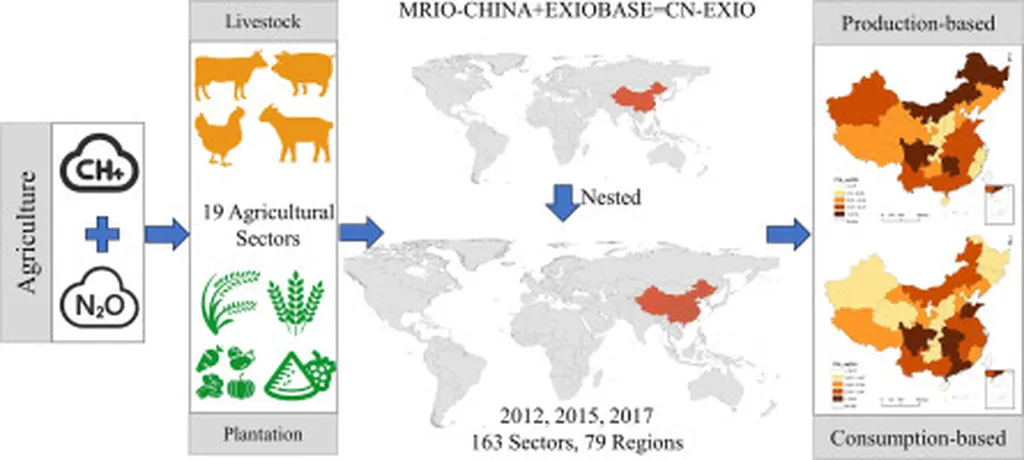In the vast, arid landscapes of Northwest China, a delicate balance is being struck between agricultural productivity and environmental sustainability. A recent study, led by Dai Yuting of the Shaanxi Province Land Engineering Construction Group Co., Ltd, and published in the journal ‘Open Geosciences’ (which translates to ‘Open Earth Sciences’), sheds light on the region’s journey towards carbon neutrality, offering valuable insights for the energy and agricultural sectors.
The research, which analyzed panel data from five northwestern Chinese provinces over a 20-year span, reveals a fluctuating yet upward trend in agricultural ecological efficiency (AEE). This efficiency is a measure of how well agricultural systems produce food while minimizing their environmental impact. “AEE shows significant differences between provinces,” Dai explains, “with Shaanxi performing best and Ningxia performing worst.”
The study identifies three distinct stages in the evolution of AEE. Initially, input factors like rural electricity and diesel consumption were dominant. However, in the middle stage, ecosystem services took center stage, highlighting the importance of natural processes in agricultural productivity. In the late stage, the key constraint emerged, emphasizing the need for a balanced approach that considers both human inputs and natural services.
The research also pinpoints the core driving factors behind AEE, including rural electricity consumption, agricultural diesel consumption, and the effective irrigation area. These findings have significant implications for the energy sector, particularly in terms of promoting green transformation and reducing dependence on fossil fuels.
Dai suggests that establishing an inter-provincial cooperation mechanism could help narrow the regional gap through ecological compensation and technology transfer. “Promoting water-saving irrigation and organic agriculture in low-efficiency areas, and building green technology demonstration bases in high-efficiency areas could be a game-changer,” Dai adds.
The study also advocates for the promotion of solar irrigation and electric agricultural machinery through subsidy policies, and the development of intelligent irrigation technology using the Internet of Things. These recommendations could not only enhance agricultural productivity but also reduce the sector’s carbon footprint, contributing to China’s goal of carbon neutrality.
This research provides a scientific basis for optimizing agriculture and achieving sustainable development in Northwest China. As the world grapples with the challenges of climate change and food security, the insights from this study could shape future developments in the field, offering a roadmap for balancing agricultural productivity with environmental sustainability. The findings, published in ‘Open Geosciences’, serve as a reminder that the path to carbon neutrality is not just about reducing emissions, but also about enhancing the efficiency and sustainability of our agricultural systems.

